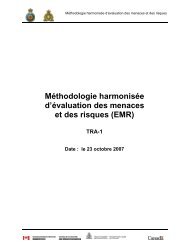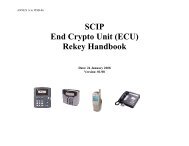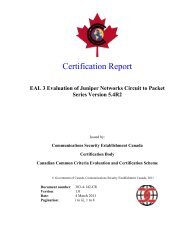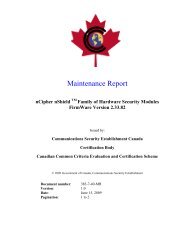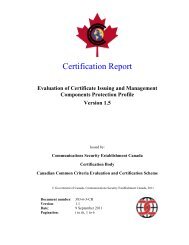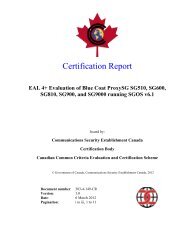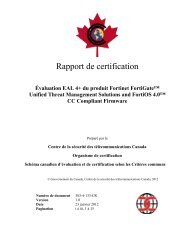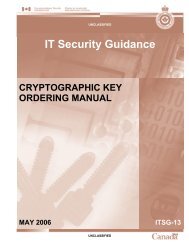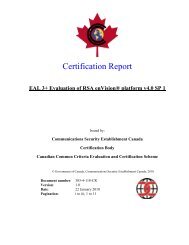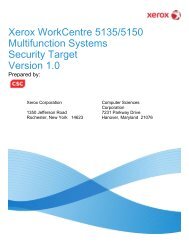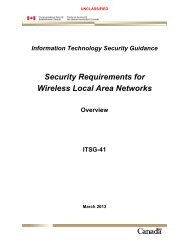Windows Server 2003 Recommended Baseline Security
Windows Server 2003 Recommended Baseline Security
Windows Server 2003 Recommended Baseline Security
You also want an ePaper? Increase the reach of your titles
YUMPU automatically turns print PDFs into web optimized ePapers that Google loves.
<strong>Windows</strong> <strong>Server</strong> <strong>2003</strong><br />
<strong>Recommended</strong> <strong>Baseline</strong> <strong>Security</strong> (ITSG-20)<br />
4.7.1.6 DisableIPSourceRouting<br />
machine\system\currentcontrolset\services\tcpip\parameters\disableipsourcerouting=4, 2<br />
The ‘disableipsourcerouting’ value determines if the sender of a TCP packet can dictate the<br />
route. The setting ‘2’ disables this ability. Dictating packet routes can obscure an attacker’s<br />
location on the network.<br />
4.7.1.7 TcpMaxConnectResponseRetransmissions<br />
machine\system\currentcontrolset\services\tcpip\parameters\tcpmaxconnectresponseretransmi<br />
ssions=4, 2<br />
The ‘tcpmaxconnectresponseretransmissions’ value determines the number of attempts that TCP<br />
re-transmits a SYN packet before aborting. The setting ‘2’ limits the possibility of a DoS attack<br />
without affecting normal users. This setting reduces the effort expended on unresponsive<br />
connections.<br />
4.7.1.8 TcpMaxDataRetransmissions<br />
machine\system\currentcontrolset\services\tcpip\parameters\tcpmaxdataretransmissions=4, 3<br />
The ‘tcpmaxdataretransmissions’ defines the number of times unacknowledged data is retransmitted<br />
before disconnection. The setting ‘3’ reduces the success of a DoS attack. This is<br />
achieved by reducing the effort expended on unresponsive connections.<br />
4.7.1.9 PerformRouterDiscovery<br />
machine\system\currentcontrolset\services\tcpip\parameters\performrouterdiscovery=4, 0<br />
The ‘performrouterdiscovery’ value controls the use of Internet Router Discovery Protocol. The<br />
setting ‘0’ disables discovery and forces the use of known routers. If the system were to discover<br />
routers, an attacker could redirect packets to another destination.<br />
4.7.1.10 TCPMaxPortsExhausted<br />
machine\system\currentcontrolset\services\tcpip\parameters\tcpmaxportsexhausted=4, 5<br />
The ‘tcpmaxportsexhausted’ value controls the point which SYN-ATTACK protection begins.<br />
The setting ‘5’ causes protection to start after five failures. This is the Microsoft standard for<br />
TCP/IP. The setting is a balance between performance and security.<br />
4.7.1.11 TCPMaxHalfOpen<br />
machine\system\currentcontrolset\services\tcpip\parameters\tcpmaxhalfopen=4, 100<br />
The ‘tcpmaxhalfopen’ value defines the number of connections in the SYN state table before<br />
SYN attack protection begins. The setting of ‘100’ initiates SYN attack protection when the state<br />
table reaches one hundred connections.<br />
<strong>Server</strong> Policy Files March 2004 99



